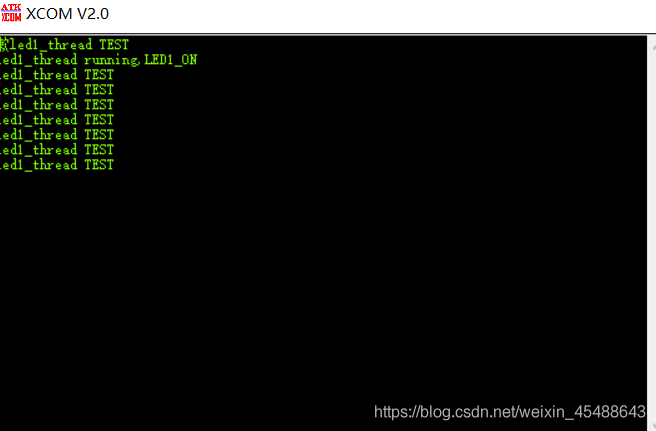STM32 CubeIDE 使用RT-Thread Nano
2020-09-24 17:00:38
STM32 CubeIDE 使用RT-Thread Nano
在STM32 CubeIDE中已經整合了RT-Thread Nano,可以直接在 IDE 中進行下載新增。
1、RT-Thread Nano pack 安裝
開啟 STM32 CubeIDE --------->Software Packs ------------>Manager Software Packs介面
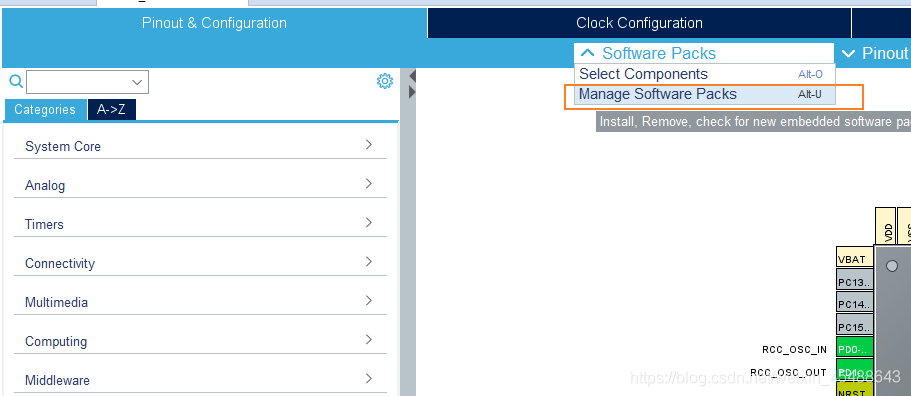
獲取 RT-Thread Nano 軟體包,需要在 STM32CubeIDE 中新增 https://www.rt-thread.org/download/cube/RealThread.RT-Thread.pdsc
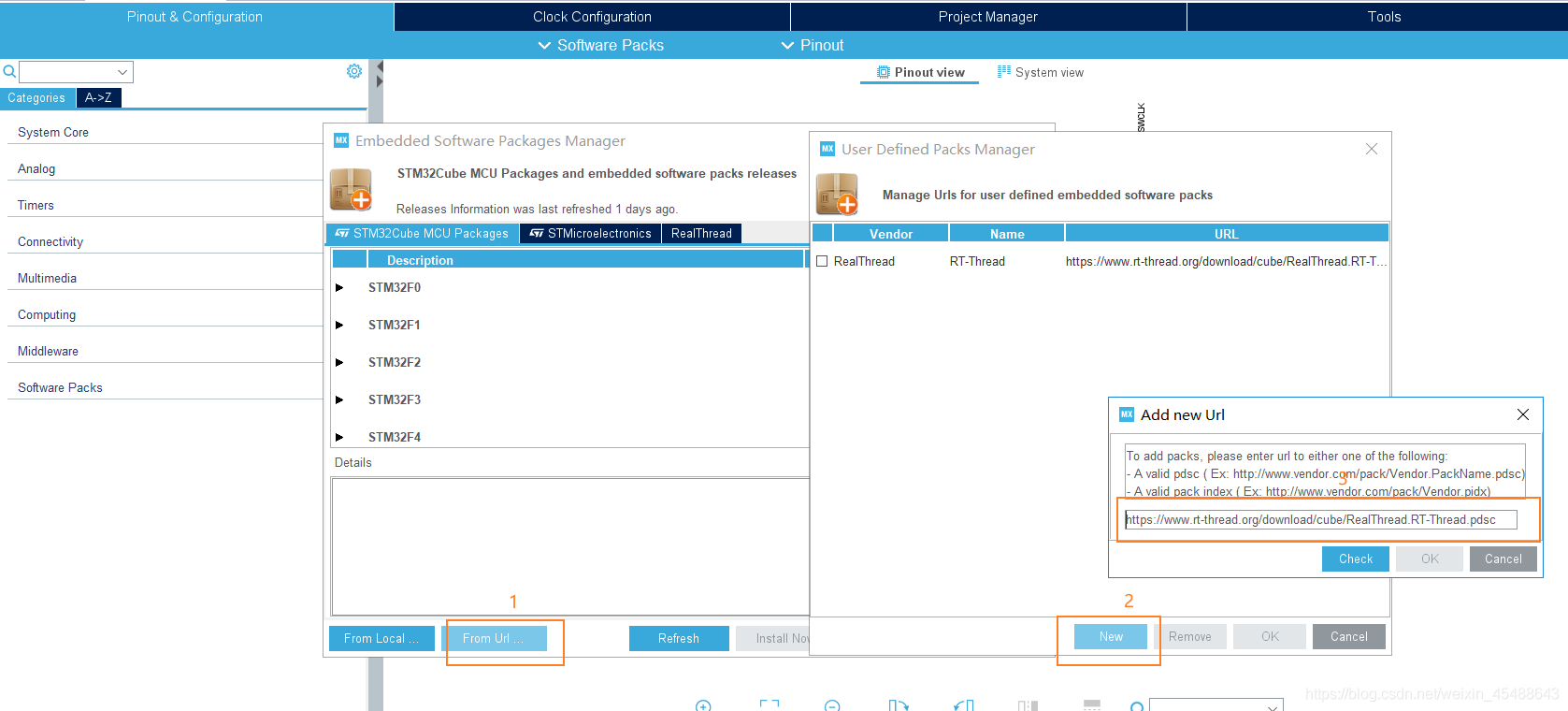
回到 Manage software packages 介面,就會發現 RT-Thread Nano 3.1.3 軟體包,選擇該軟體包,點選 Install Now,如下圖所示(顏色填充表示已安裝):
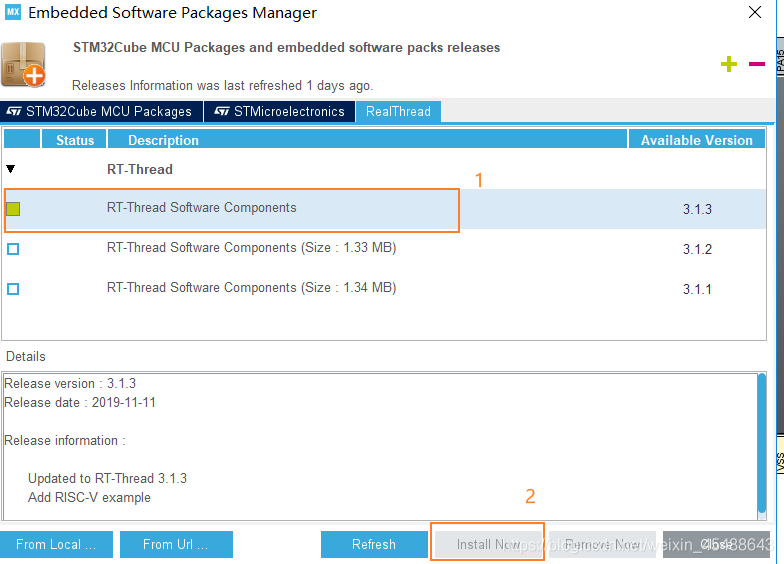
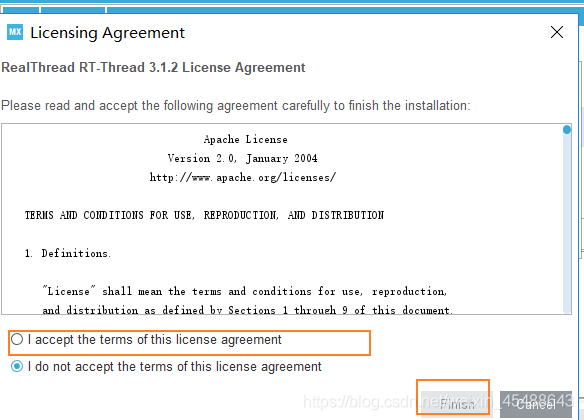
2、建立工程新增 RT-Thread Nano
2.1 、建立一個基本工程
建立一個基本的工程檔案,包含2個LED燈和USART1。
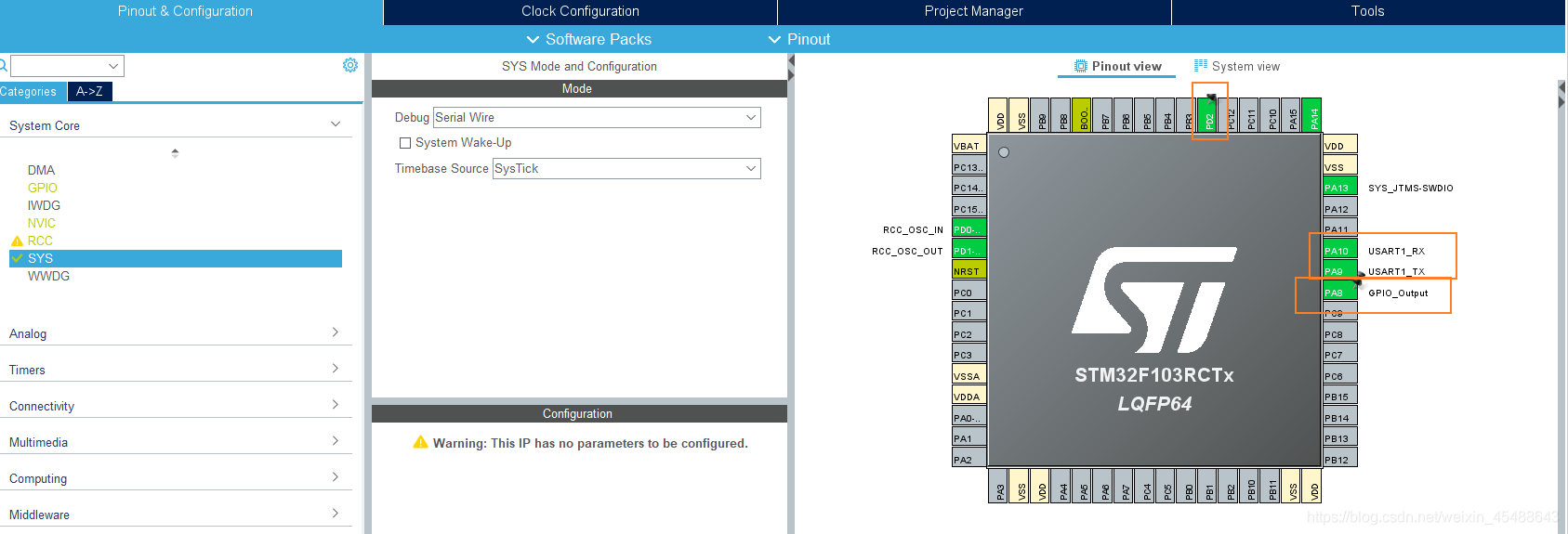
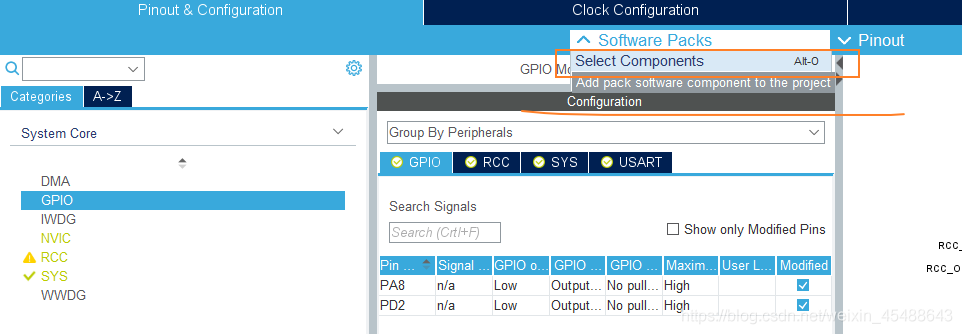
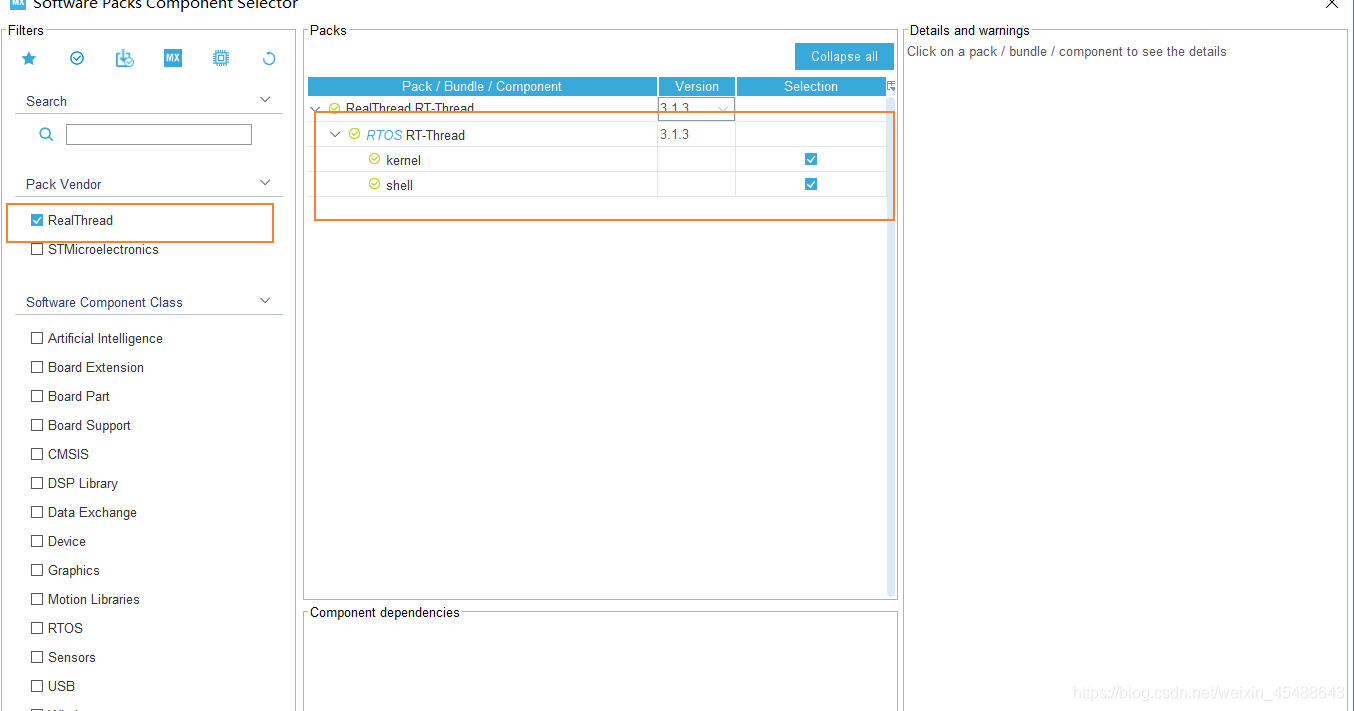
2.2、設定 Nano
勾選 RT-Thread
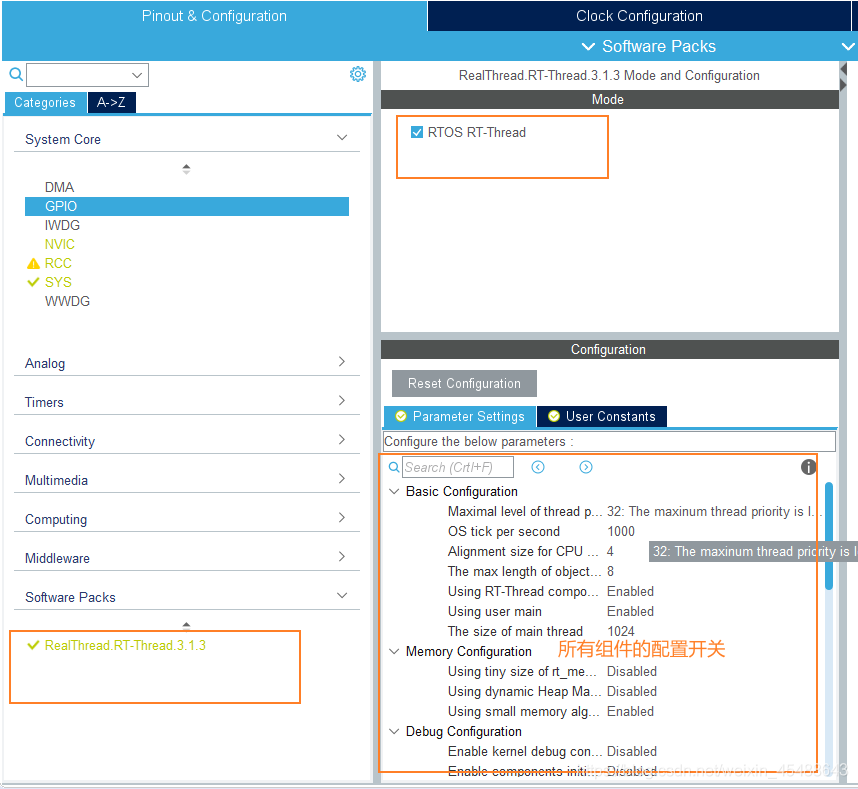
適配 RT-Thread Nano
中斷與例外處理
RT-Thread 作業系統重定義 HardFault_Handler、PendSV_Handler、SysTick_Handler 中斷函數,為了避免重複定義的問題,在生成工程之前,需要在中斷設定中,程式碼生成的選項中,取消選擇三個中斷函數(對應註釋選項是 Hard fault interrupt, Pendable request, Time base :System tick timer),最後點選生成程式碼,具體操作如下圖中
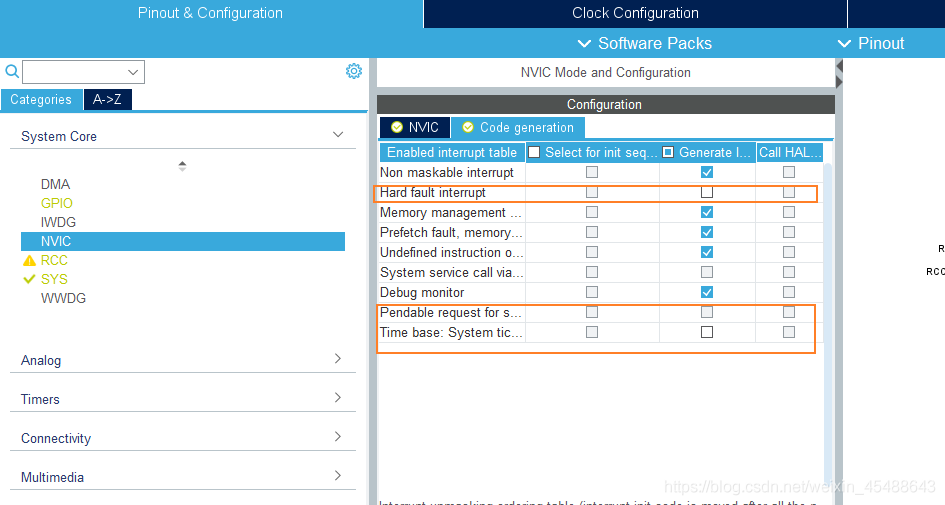
3、工程程式碼修改
3.1 需要修改的部分
1 、修改啟動檔案 startup_stm32f103rctx.s
bl main 修改為 bl entry
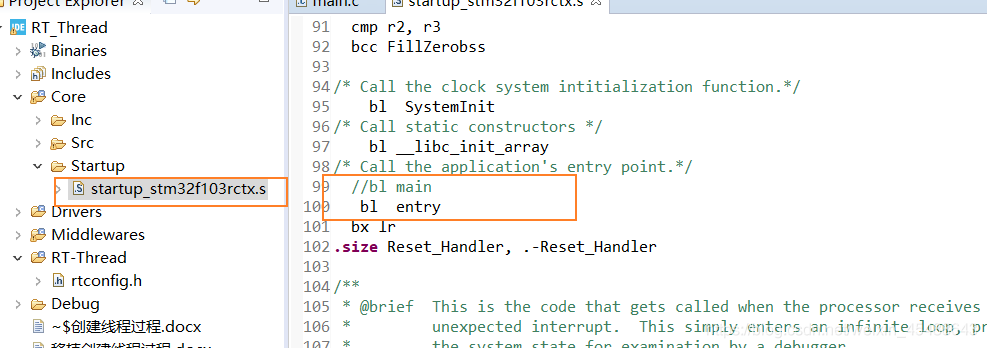
3.2 、設定rt_kprintf埠輸出
埠對映,函數可以放在main.c檔案裡面。
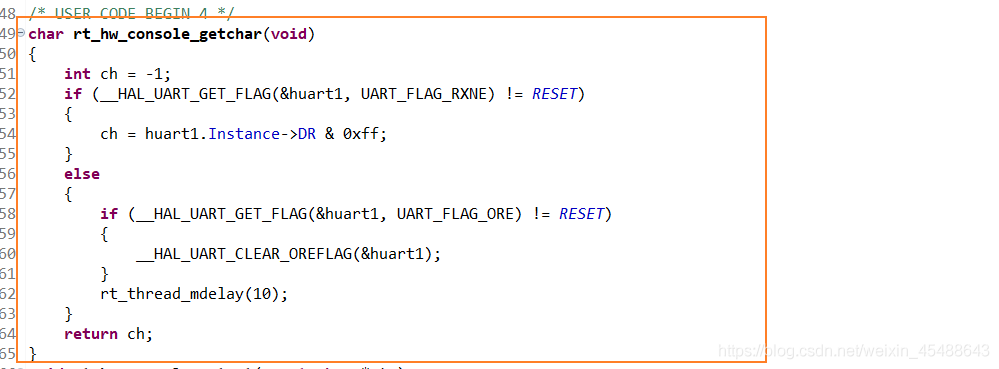
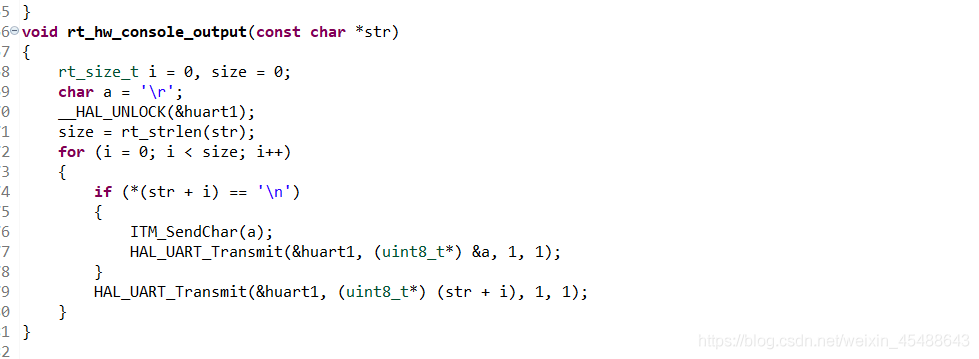
/* USER CODE BEGIN 4 */
char rt_hw_console_getchar(void)
{
int ch = -1;
if (__HAL_UART_GET_FLAG(&huart1, UART_FLAG_RXNE) != RESET)
{
ch = huart1.Instance->DR & 0xff;
}
else
{
if (__HAL_UART_GET_FLAG(&huart1, UART_FLAG_ORE) != RESET)
{
__HAL_UART_CLEAR_OREFLAG(&huart1);
}
rt_thread_mdelay(10);
}
return ch;
}
void rt_hw_console_output(const char *str)
{
rt_size_t i = 0, size = 0;
char a = '\r';
__HAL_UNLOCK(&huart1);
size = rt_strlen(str);
for (i = 0; i < size; i++)
{
if (*(str + i) == '\n')
{
ITM_SendChar(a);
HAL_UART_Transmit(&huart1, (uint8_t*) &a, 1, 1);
}
HAL_UART_Transmit(&huart1, (uint8_t*) (str + i), 1, 1);
}
}
/* USER CODE END 4 */
3.3 、編寫執行緒檔案
建立一個app_rt_thread.c檔案用於儲存執行緒程式碼
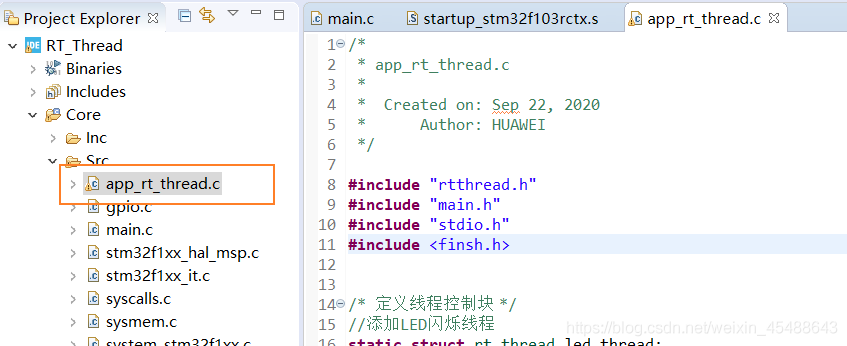
app_rt_thread.c檔案內容:
#include "rtthread.h"
#include "main.h"
#include "stdio.h"
#include <finsh.h>
/* 定義執行緒控制塊 */
//新增LED閃爍執行緒
static struct rt_thread led_thread;
static char led_thread_stack[256];
static void led_thread_entry(void *parameter);
int MX_RT_Thread_Init(void);
int MX_RT_Thread_Init(void)
{
//初始化執行緒
rt_err_t rst;
rst = rt_thread_init(&led_thread,
(const char *)"ledshine", /* 執行緒名字 */
led_thread_entry, /* 執行緒入口函數 */
RT_NULL, /* 執行緒入口函數引數 */
&led_thread_stack[0],
sizeof(led_thread_stack), /* 執行緒棧大小 */
RT_THREAD_PRIORITY_MAX-2, /* 執行緒的優先順序 */
20); /* 執行緒時間片 */
if(rst == RT_EOK)
{///* 啟動執行緒,開啟排程 */
rt_thread_startup(&led_thread);
}
}
/*
*************************************************************************
* 執行緒定義
*************************************************************************
*/
static void led_thread_entry(void *parameter)
{
while(1)
{
rt_kprintf("led1_thread running,LED1_ON\r\n");
HAL_GPIO_WritePin(GPIOA, GPIO_PIN_8, GPIO_PIN_RESET);
rt_thread_mdelay(500);
HAL_GPIO_WritePin(GPIOA, GPIO_PIN_8, GPIO_PIN_SET);
rt_thread_mdelay(500);
}
}
MSH_CMD_EXPORT(led_thread_entry,thread running);
3.4 、main.c 修改

/* USER CODE BEGIN Includes */
#include "rtthread.h"
extern int MX_RT_Thread_Init(void);

int main(void)
{
/* USER CODE BEGIN 1 */
/* USER CODE END 1 */
/* MCU Configuration--------------------------------------------------------*/
/* Reset of all peripherals, Initializes the Flash interface and the Systick. */
HAL_Init();
/* USER CODE BEGIN Init */
/* USER CODE END Init */
/* Configure the system clock */
SystemClock_Config();
/* USER CODE BEGIN SysInit */
/* USER CODE END SysInit */
/* Initialize all configured peripherals */
MX_GPIO_Init();
MX_USART1_UART_Init();
/* USER CODE BEGIN 2 */
MX_RT_Thread_Init();
/* USER CODE END 2 */
/* Infinite loop */
/* USER CODE BEGIN WHILE */
while (1)
{
HAL_GPIO_TogglePin(GPIOD, GPIO_PIN_2);
rt_kprintf("led1_thread TEST\r\n");
rt_thread_mdelay(100);
/* USER CODE END WHILE */
/* USER CODE BEGIN 3 */
}
/* USER CODE END 3 */
}
串列埠輸出:
